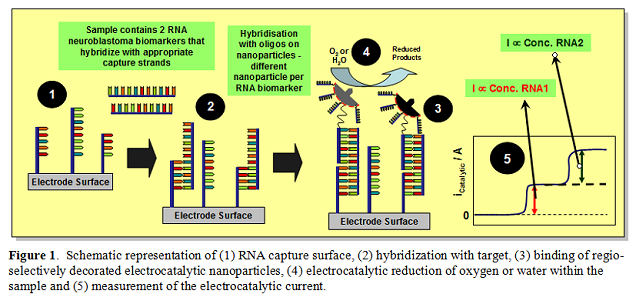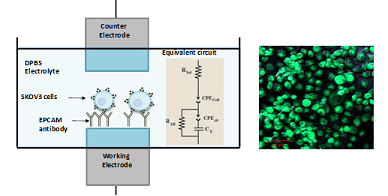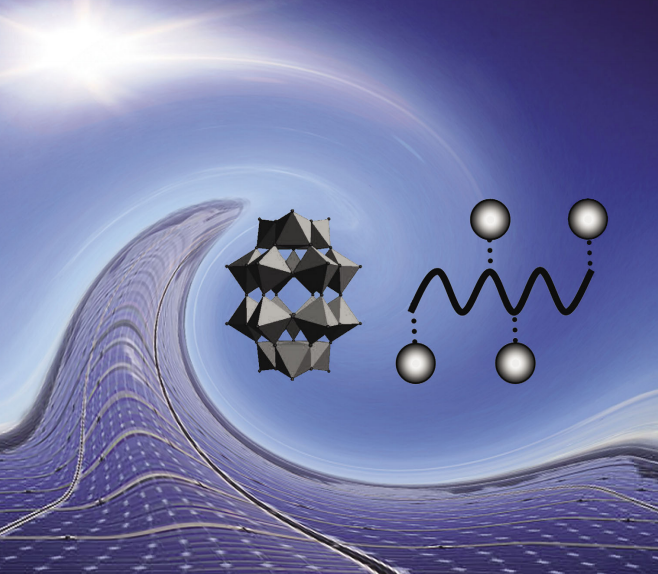
Research
Research Themes
1. Interfacial Lipid Films & Nanostructures
Development of nanoscale structures as mimics of the cell membrane and cytoskeletal structures for study of diffusion of transmembrane proteins, particularly those implicated in thrombosis. We are assessing lipid and protein diffusion over such structures using Fluorescence Lifetime Correlation Spectroscopy and fluorescence recovery after photobleaching

2. Ultrasensitive microRNA quantification for disease Detection
We are developing ultrasensitive, multiplexed approaches to directly detect extremely low concentrations of disease biomarkers. One such biomarker that may be present in blood and tissue is microRNA associated with neuroblastoma. Our approach relies on amplifying a current or light generated upon target binding rather than amplifying the target itself through PCR. To achieve this objective, nanoparticles are created with two spatially separated regions, i.e., a target specific capture region and a region that generates a signal following miRNA binding. The target binding region has immobilized capture miRNA sequences. Measurements in blood are achieved through the generation of an amplified Faradaic current from an electrocatalytically active signal generation region. Within cells and tissue, this region is labelled with plasmonically enhanced dyes for emission or Raman detection. The advantage of this approach is that issues relating to bioreceptor blocking or cross-talk are avoided. Neuroblastoma are generally associated with poor patient survival rates. Multiplexing, through changes in the nanoparticle or dye composition, will allow a small panel of microRNA (miRNA) to be detected, thereby providing the ability for early detection of Neuroblastoma.

3. Cell Detection by Impedance
Circulating Tumor Cells, CTCs, are rare, typically malignant, cells found in the peripheral blood circulation that originate from the primary tumour. They play a central role in cancer metastasis which is the major cause of cancer related deaths. Detecting CTCs represents a powerful approach to the diagnosis of the disease and can provide significant insights into the treatment efficacy. However, there are significant analytical challenges in cell detection. For example, even when a significant primary tumour is present, there may be only 5 to 10 cancer cells per mL of blood. The concentration of other cells is within the blood is at least a factor of 105 higher than these cancer cells, meaning that a highly selective assay is required. We are using biological electrochemical impedance spectroscopy (bio-EIS) as a simple, non-destructive, label-free and highly sensitive approach to detecting cells. Circulating tumour cells show significant differences in their shape, size, size distribution, and composition, as well as thickness and composition of cell membranes compared to healthy cells. Therefore, their electrical properties may be sufficiently distinct to allow them to be selectively detected.

4. Polyoxometalate-Ruthenium Thin Films for Solar Energy Conversion
Interfacial layer by layer assemblies of polyoxometalate and photoactive metal complexes under defined conditions lead to visible light sensitized photocatalysis by the polyoxometalate. We are optimising such film for application in solar cells.
5. Environmentally Sensitive Multimodal Probes for Cell Imaging & Protein Recognition
Design and synthesis of environmentally sensitive inorganic probes for sensing within the cellular environment. Molecular targeting is achieved using peptides and oligonucleotides and the performance of these materials is explored in a range of mammalian cell lines. Also under development are a range of Stokes shifted NIR probes based on BODIPY for bioimaging.


